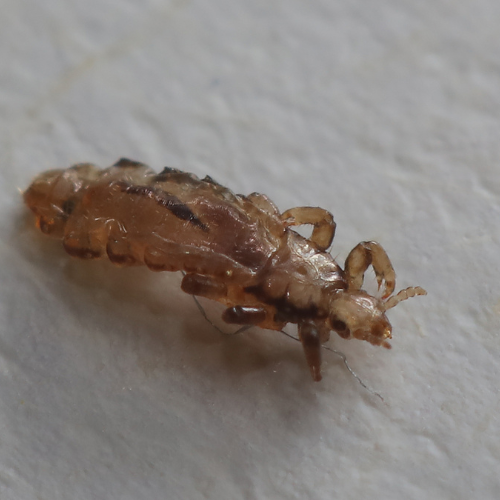Human Lice

Proud Supporter of Disabled Veterans
No Contracts
Services provided without written contracts.
Introduction to
Human lice are parasitic insects that infest the hair and skin of humans, causing discomfort and potential health issues. There are three types of lice that commonly affect humans: head lice (Pediculus humanus capitis), body lice (Pediculus humanus corporis), and pubic lice (Pthirus pubis). Each type of louse has unique characteristics and habitats, but all share the common trait of feeding on human blood. Understanding the biology, habits, and effective prevention and treatment methods for human lice is essential for managing infestations and ensuring good hygiene and health.
Recognition
Human lice are small, wingless insects that vary in size depending on the type. Head lice and body lice are similar in appearance, measuring about 2-3 mm in length and having elongated, grayish-white bodies. Pubic lice, also known as crab lice, are smaller (1-2 mm) and have a broader, crab-like appearance. Head lice are typically found on the scalp, especially around the ears and nape of the neck. Body lice live in clothing and move to the skin to feed. Pubic lice infest the coarse hair of the genital area but can also be found on other coarse body hair. All types of lice cause itching and irritation due to their bites.
Biology
Human lice undergo a simple metamorphosis with three life stages: egg (nit), nymph, and adult. Females lay eggs (nits) close to the scalp or on clothing fibers, depending on the species. Nits hatch into nymphs, which resemble smaller versions of adults. Nymphs mature into adults in about 7-10 days and start reproducing. Lice feed on human blood multiple times a day, and their bites can cause intense itching and discomfort. The entire lifecycle from egg to adult can be completed in about three weeks, allowing for rapid population growth if not controlled.
Habits
Head lice live on the scalp, attaching their eggs to the base of hair shafts. They are spread primarily through direct head-to-head contact. Body lice live in clothing and bedding, moving to the skin to feed, and are typically spread through contact with infested clothing or bedding. Pubic lice infest the coarse hair of the genital area and are usually transmitted through sexual contact, but can also be spread through infested bedding, towels, or clothing. All types of lice are highly contagious and can spread quickly in crowded or close-contact environments.
Prevention
Preventing lice infestations involves maintaining good personal hygiene and avoiding close contact with infested individuals or items. Regularly wash clothing, bedding, and personal items in hot water and dry them on high heat. Avoid sharing personal items such as combs, brushes, hats, and towels. Conduct regular head checks, especially for children, to catch infestations early. For pubic lice, practicing safe sex and avoiding sharing personal items can help reduce the risk of transmission. Keeping living areas clean and minimizing clutter can also help prevent infestations.
Professional
If lice infestations become unmanageable, professional pest control or medical services can provide effective solutions. STL Pest Control offers comprehensive treatments to eliminate lice populations from homes and personal items. Their technicians are trained to identify lice infestations and apply appropriate treatments to ensure thorough eradication. For severe or persistent infestations, medical professionals can prescribe stronger treatments and provide guidance on managing symptoms and preventing reinfestation. Professional services ensure thorough and long-lasting control, providing peace of mind and a healthier living environment.



Our Office







